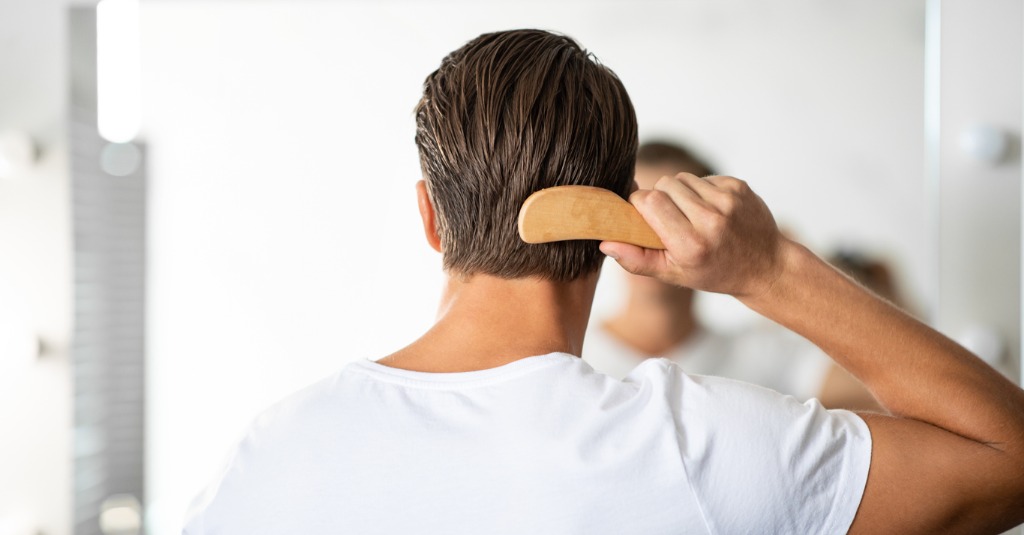Healthy hair is the foundation of a good hairstyle. Whether you’re going for a bouffant or a sleek blow-dry, understanding how your hair behaves at each stage of its growth cycle will help you make better decisions about which products and techniques to use on your hair.
The Four Stages of the Hair Cycle
With understanding how the hair cycle works, we must first become familiar with the four phases of the hair cycle.
1. Anagen phase It is the active growth phase of your hair. During this time, the stem cells divide rapidly and produce new hair strands that come up from the skin and come to your head. The average healthy adult hair can grow between three and seven years in the anagen phase.
2. Catagen phase It is also known as the transitional phase as it marks a short pause between active growth (anagen phase) and hair loss (telogen phase). It typically takes about one to two weeks, but can vary from one person to another.
3. Telogen phase is that your follicles stay dormant before they fall out. This usually happens about three months after the anagen phase begins. Once your hair enters the telogen phase, it stays there for about two to four months. Your hair will remain in telogen until it sheds as a new strand and begins to grow in the anagen phase. During the telogen phase, you can lose 50-100 strands per day.
4. Exogenous phase It is technically an extension of the telogen phase, not part of the hair cycle. The exogenous phase signals that you have reached the end of all hair loss during this cycle. It usually only lasts a day or two but can vary from person to person.
Hair Loss Conditions
those who hair loss conditionssuch as androgenetic hair losstelogen effluvium and alopecia areata should pay special attention to how they treat their hair. Each of these conditions can cause different stages of the hair cycle to be compromised.
Androgenetic Alopecia
Androgenetic alopecia is usually caused by genetics and tends to progress more slowly than other types of hair loss. This causes the growth phase (anagen) to shorten. Androgenetic alopecia typically involves a receding hairline on either side of your forehead that forms an “M” shape above your ears. Typically, this type of hair loss is not noticed until people are in their 30s or 40s, but there is no time limit when someone can start to notice thinning in their hair shafts.
Telogen Effluvium
Telogen effluvium is a form of hair loss triggered by something in your environment – it can be anything from illness to major stress. This type of thinning occurs suddenly and causes more hairs to enter the telogen phase (resting phase) at the same time, increasing the likelihood of shedding when brushed or styled.
Alopecia Areata
Alopecia areata typically starts with a round bald spot on your scalp, but can also manifest as thinning in other areas, such as the eyebrows, eyelashes, and body hair. Like telogen effluvium, alopecia areata is another example of how things in our environment can affect our body’s responses. It occurs when the immune system attacks the cells responsible for producing hair follicles. Alopecia areata hair loss starts to worsen when your hair follicles enter the resting phase too early.
Maintaining Healthy Hair During the Cycle
The best way to have healthy hair is to be aware of what stage your hair is in and to apply treatment accordingly.
If you are still actively growing new strands, focus on nourishing and strengthening them with products designed for the growth phase (anagen). Nutrition It plays a critical role here – a diet high in protein helps follicles stay strong during this growth period. After two or three months, switch to skincare products that target the resting/shedding part of the cycle (telogen).
Once the hair cycle is over, it’s time to switch to conditioning mode. Replenish nutrients lost through the hair cycle using gentle cleansers and moisturizing treatments, such as oils that help maintain the scalp’s natural barrier.
since your hair is mainly composed of a protein called keratinIt may be beneficial to include healthy proteins such as fish, beans, and lean meats in your diet to promote hair health. Additionally, supplements such as Vitamin D, Vitamin C, Iron, Vitamin B12 and zinc can also help support healthy hair growth.
How Can I Treat Hair Loss?
this LaserCover It is a low-level laser therapy device that promotes hair regrowth. LaserCap scientifically proven promoting hair growth in people suffering from alopecia and other hair loss conditions. Contact us to find out if LaserCap is right for you here or call (855) 825-9691 today.
